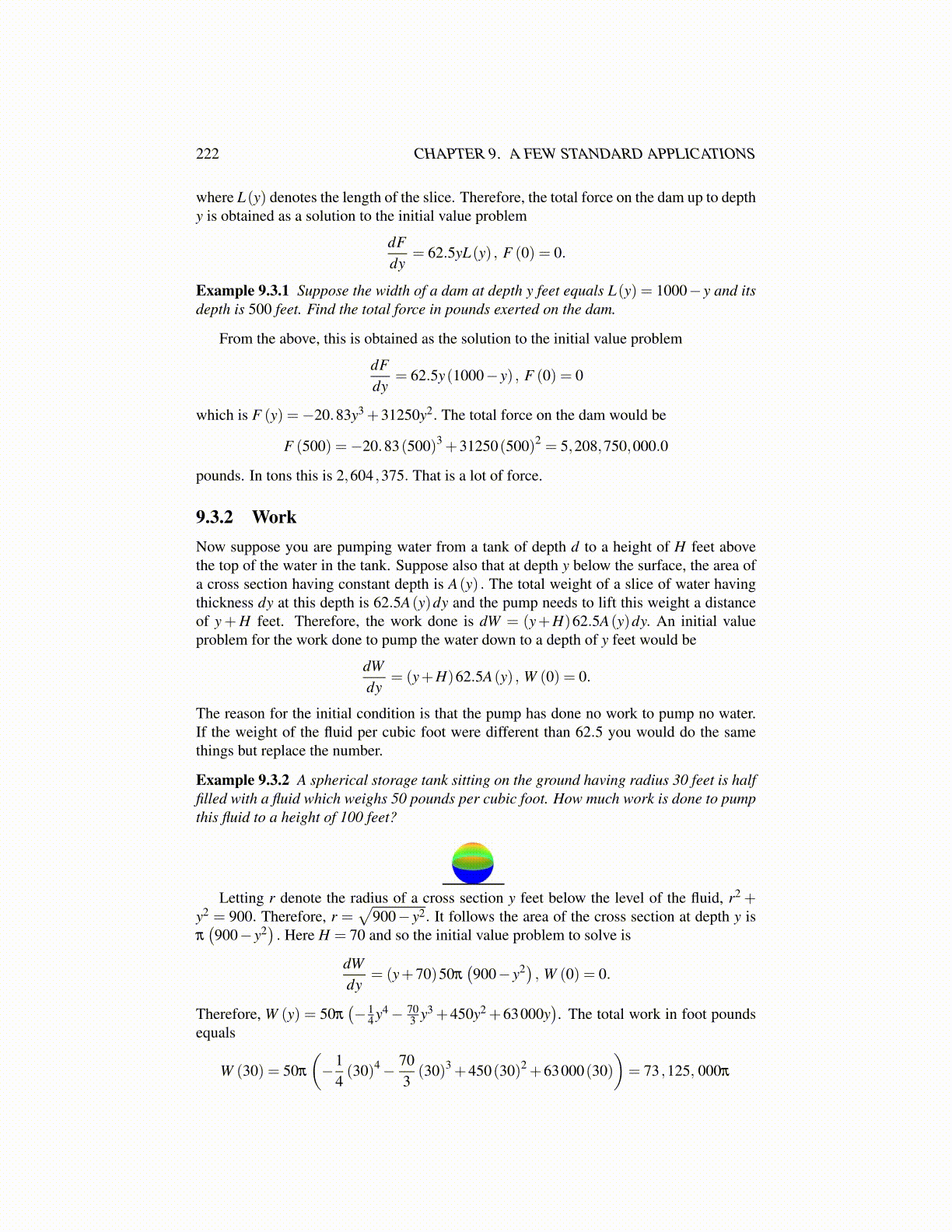
222 CHAPTER 9. A FEW STANDARD APPLICATIONS
where L(y) denotes the length of the slice. Therefore, the total force on the dam up to depthy is obtained as a solution to the initial value problem
dFdy
= 62.5yL(y) , F (0) = 0.
Example 9.3.1 Suppose the width of a dam at depth y feet equals L(y) = 1000− y and itsdepth is 500 feet. Find the total force in pounds exerted on the dam.
From the above, this is obtained as the solution to the initial value problem
dFdy
= 62.5y(1000− y) , F (0) = 0
which is F (y) =−20.83y3 +31250y2. The total force on the dam would be
F (500) =−20.83(500)3 +31250(500)2 = 5,208,750,000.0
pounds. In tons this is 2,604 ,375. That is a lot of force.
9.3.2 WorkNow suppose you are pumping water from a tank of depth d to a height of H feet abovethe top of the water in the tank. Suppose also that at depth y below the surface, the area ofa cross section having constant depth is A(y) . The total weight of a slice of water havingthickness dy at this depth is 62.5A(y)dy and the pump needs to lift this weight a distanceof y+H feet. Therefore, the work done is dW = (y+H)62.5A(y)dy. An initial valueproblem for the work done to pump the water down to a depth of y feet would be
dWdy
= (y+H)62.5A(y) , W (0) = 0.
The reason for the initial condition is that the pump has done no work to pump no water.If the weight of the fluid per cubic foot were different than 62.5 you would do the samethings but replace the number.
Example 9.3.2 A spherical storage tank sitting on the ground having radius 30 feet is halffilled with a fluid which weighs 50 pounds per cubic foot. How much work is done to pumpthis fluid to a height of 100 feet?
Letting r denote the radius of a cross section y feet below the level of the fluid, r2 +y2 = 900. Therefore, r =
√900− y2. It follows the area of the cross section at depth y is
π(900− y2
). Here H = 70 and so the initial value problem to solve is
dWdy
= (y+70)50π(900− y2) , W (0) = 0.
Therefore, W (y) = 50π(− 1
4 y4 − 703 y3 +450y2 +63000y
). The total work in foot pounds
equals
W (30) = 50π
(−1
4(30)4 − 70
3(30)3 +450(30)2 +63000(30)
)= 73 ,125, 000π